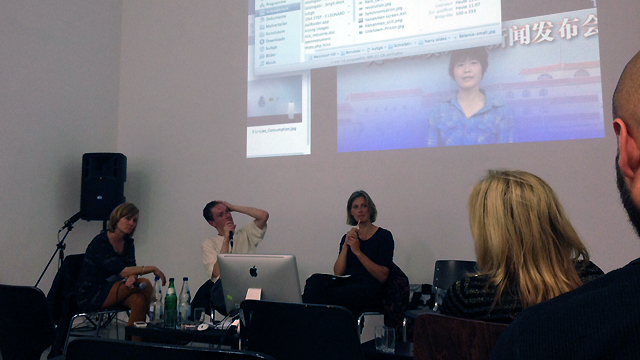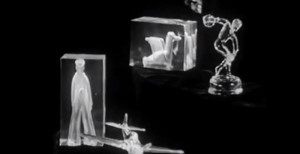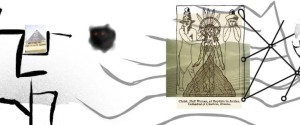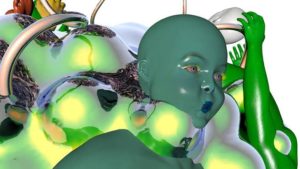Few of us have any illusions about where our material possessions come from, but when it comes to the immaterial, the digital realm of images and data, the labour costs remain largely hidden. Digital media tends to appear comparatively ethical — e-books are lauded for their low carbon footprint while much online content is seen as user-created, open and democratic. But in his recent research and work, artist Harry Sanderson aims to provide insight into the invisible economy of digital media production. He writes:
“Relating a Google search return to an equivalent expenditure of fossil fuels, or the fluctuation of pixels across a screen with the exploited labour of rural migrant workers in Shenzhen, or topsoil loss in Inner Mongolia, is as remote and unattainable for the majority of users as is an understanding of the technical functionality of the devices themselves.”
— Excerpted from Human Resolution, published in Mute Magazine, April, 2013.

While there have been some attempts to reveal at least the energy cost of the internet (the website Blackle comes to mind), the ephemeral nature of online media serves to alienate us from the human cost of its production. As part of transmediale’s reSource006, a three-day program of talks at Berlin’s Kunstraum Kreuzberg Bethanien, curator Rozsa Farkas initiated a discussion between Sanderson and cultural scientist Vera Tollmann. The talk centred around Sanderson’s up-coming project for Arcadia Missa gallery, Unified Fabric, which involves the display and use of a self-built render-farm. Using the cheapest materials he could find, Sanderson created a render-farm that performs the kind of image rendering usually only achieved by industrial super-computers. By showing the physical objects and the time needed to achieve image rendering, Sanderson re-inserts a labour-value into the digital images he creates.
As a way of approaching Sanderson’s work, Tollmann presented some topical examples she encountered while researching in China. To begin with, she showed a clip of a massive LED screen situated in Tiananmen Square, displaying a constant stream of alluring high-definition film shot in various Chinese provinces. Tollman speculated that this exercise in self-promotion must cost the State millions to run. Tollman then showed images from Chinese artist Li Liao’s performative work, Consumption, which involved him taking a job at Foxconn for forty-five days and using all of his earnings to buy a single iPad. In a sense, the high-production digital images displayed in Tiananmen Square are a screen for China’s underlying digital economy, where many workers migrate from the rural provinces to work in factories (some say sweatshops) that produce the world’s smart-phones and computers. While media exposure of factories like Foxconn has been prevalent in recent years, we still tend to divorce our physical devices (and the physical labour required to create them) from the immaterial digital world they provide access to.
Tollmann and Sanderson also discussed the phenomenon of gold farming. This practice involves labour forces, predominantly in China, playing games such as World of Warcraft and on-selling their virtual achievements to a largely Western gaming audience. An activity considered leisure in one context becomes labour in another, with the two fuelling one another. With everything from gaming to image re-touching to online journalism being out-sourced to developing nations, the virtual world increasingly reproduces the inequitable economic structures of the real world.
Sanderson will use his render-farm, made as cheaply as possible, to render the most expensive things possible (which in rendering terms, means the most computationally intense images). Anderson explained how, aesthetically speaking, the most difficult images to render are usually also the most ephemeral – light patterns, moving liquids, wisps of smoke – the kind of immaterial effects that add extra shine to a big-budget film production. While these kinds of images may evoke an instinctual association with high production values, they are also precisely the kind of images we are unlikely to interrogate too deeply – they are fleeting, inconsequential, digital fluff. Towards the end of the discussion, Sanderson suggested that much art exploiting digital media fails to critically assess the medium itself. Ideally, Sanderson’s Unified Fabric when realized will engage not only with how digital images are produced, but in our wilful ignorance of their more material realities. **
Header image: Harry Sanderson, ‘F_R (flexibledisplay)’ (2013.) Still from documentation. Video installation.

























